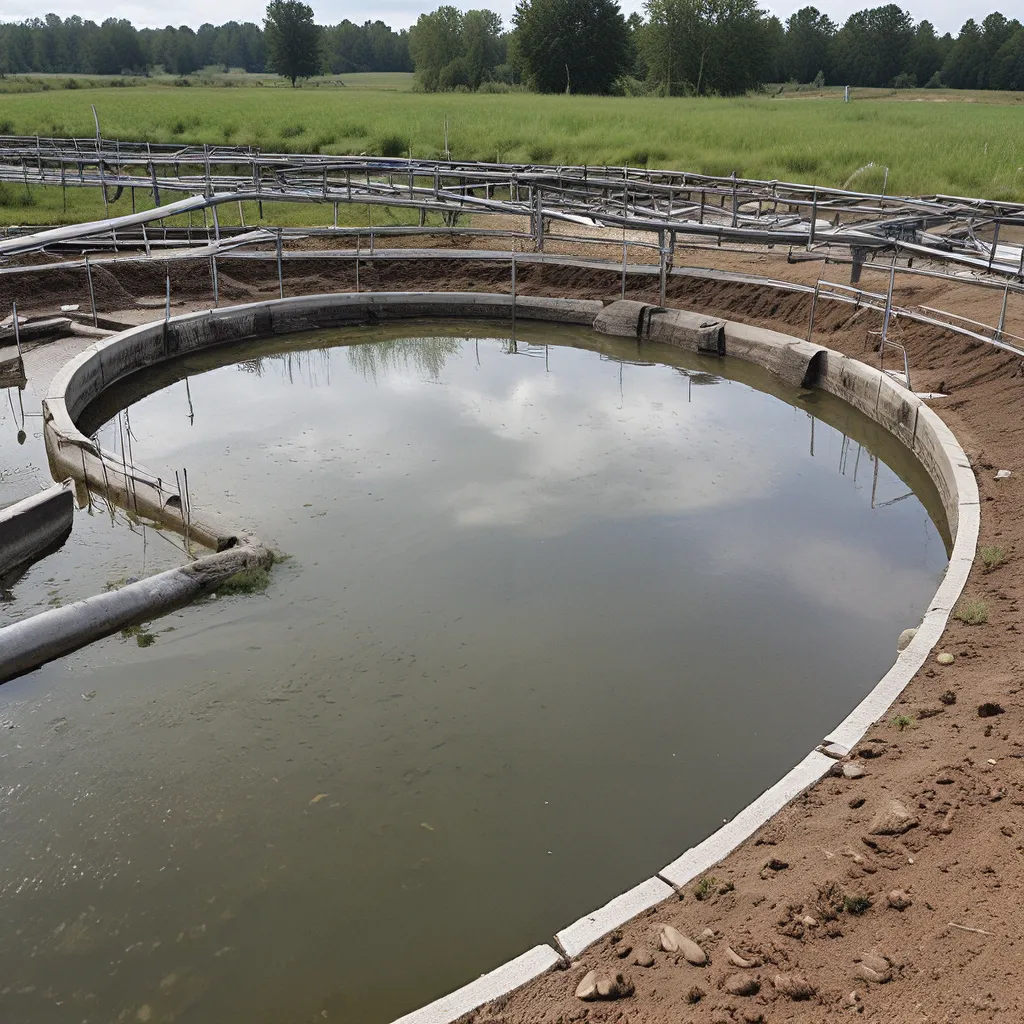
As an environmental enthusiast, I’ve always been fascinated by the concept of the circular economy and its potential to revolutionize the way we manage our resources. Recently, I stumbled upon a fascinating story about a company called Ostara Nutrient Recovery Technologies that’s doing just that – closing the loop when it comes to nutrient cycling.
You see, the traditional approach to wastewater treatment has been pretty linear. We take in all sorts of municipal and industrial waste, run it through a complex web of mechanical, biological, and chemical processes, and then discharge the treated water back into the environment. But what happens to all the valuable nutrients that get captured in the process? Typically, they end up being hauled off to a landfill or incinerated, effectively removing them from the nutrient cycle.
Recognizing the Dichotomy of Nutrients
But the folks at Ostara saw things a bit differently. They recognized that these nutrients – particularly phosphorus – can be a liability or an asset, depending on where they end up. When they build up as the mineral struvite in pipes and pumps at wastewater treatment plants, they can be a real headache, clogging up the works and costing a fortune to remove. And when they’re discharged into waterways in high concentrations, they can lead to all sorts of environmental issues like eutrophication and algal blooms.
However, when these nutrients are in the form of a fertilizer product, they can be a real boon – contributing to healthy plant growth and high crop yields. That’s the epiphany that led Ostara to develop their innovative Pearl Nutrient Recovery Process, which allows them to transform that troublesome struvite into a valuable, slow-release fertilizer called Crystal Green.
The Ingenious Pearl Process
The way Ostara’s system works is pretty ingenious. It all starts with a wastewater treatment method called Enhanced Biological Phosphorus Removal (EBPR). In this process, certain bacteria are selectively enriched, allowing them to accumulate large quantities of polyphosphate within their cells. When these bacteria are placed in an anaerobic digester, they release the phosphorus back into a soluble form.
Ostara’s Pearl Process then steps in, taking this concentrated phosphorus-rich stream and crystallizing it into pure fertilizer granules. The process is further enhanced by their WASSTRIP technology, which diverts wastewater upstream of the anaerobic digester, significantly reducing the buildup of that pesky struvite in the plant’s critical components.
The result? A win-win-win scenario. Wastewater treatment plants get an additional revenue stream from selling the fertilizer, while also lowering their operational costs by reducing the need for costly chemical treatments and sludge disposal. Farmers get access to a high-quality, continuously-releasing fertilizer that’s more efficiently utilized by their crops, reducing nutrient runoff and eutrophication. And the environment as a whole benefits from the reduced carbon intensity and more sustainable nutrient cycling.
Closing the Loop for a Better Future
When I think about the bigger picture, it’s clear that technology like Ostara’s is the key to closing the loop on our nutrient cycles. The traditional linear model of agriculture and wastewater treatment has served us well in many ways, helping to feed a growing population and improve public health. But it’s also had some unintended consequences, depleting our finite phosphorus reserves and contributing to environmental degradation.
By adopting a more circular approach, where nutrients are recovered and reused rather than discarded, we can not only address these pressing challenges, but also create new economic opportunities and strengthen the connection between our urban and rural communities. It’s the kind of holistic, systems-level thinking that I believe will be essential as we work to build a more sustainable future.
Of course, transitioning to this new paradigm won’t be easy. There are complex technical, regulatory, and behavioral hurdles to overcome. But the work that companies like Ostara are doing gives me hope. They’re proving that innovative technology, collaborative partnerships, and a forward-thinking mindset can make all the difference.
As I continue to explore this topic, I’m excited to see what other creative solutions emerge. Who knows, maybe one day we’ll look back on the old linear wastewater treatment model as a relic of the past, replaced by a new generation of regenerative, nutrient-cycling systems that keep our ecosystems healthy and our communities thriving. It’s a future I’m eager to be a part of, and I hope you’ll join me on this journey.
In the meantime, if you’re curious to learn more about the work that Alpha Wastewater is doing in the realm of sustainable wastewater management, I’d encourage you to check out their website. They might just have some insights that can help you rethink the way you approach this critical issue.